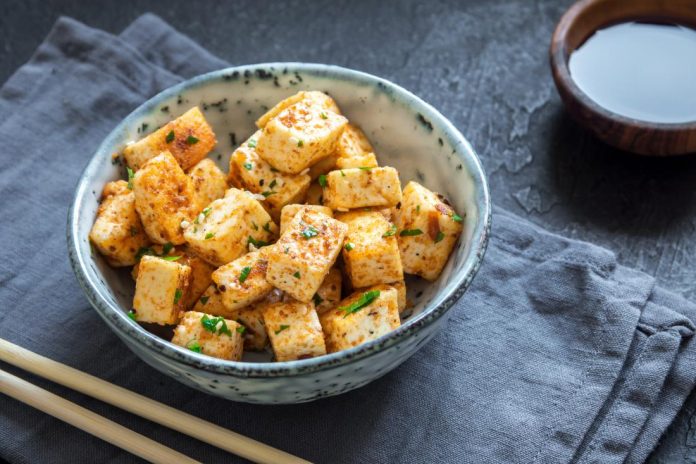Overview|Foods to eat|Foods to avoid|Preparation tips|Nutritional tips|Conclusion.
The soft food diet is one that includes foods that are easy to chew and swallow and excludes foods with a hard texture. With careful planning, it is still possible to eat a tasty, balanced diet from a variety of soft foods.
The mechanical soft food diet is another name for the diet, and refers to using equipment, such as blenders or food processors, to make food into a smooth puree.
In this article, we take a look at the foods to include and those to avoid when following a soft food diet.
When should someone follow this diet?
There are many situations where people are advised to follow a soft food diet:
Following surgery
Doctors may recommend that people who have had surgery to the mouth, head, neck, or stomach follow a soft food diet for a period following surgery.
Examples of surgery that may require a person to eat a soft food diet afterward include gastrectomy, where a surgeon removes all or part of the stomach, and bariatric surgery, which is an operation to reduce someone’s weight.
Cancer treatment
Chemotherapy and radiotherapy can make the digestive tract sore and inflamed, a condition known as mucositis. If someone is experiencing mucositis, they might benefit from a soft food diet.
Difficulty swallowing
The soft food diet may be appropriate for people who find it difficult to chew or swallow. This condition is called dysphagia.
For people with significant dysphagia, who are unable to eat tough foods safely, a doctor or dietitian might prescribe a texture-modified Source. In this diet, users alter the texture of foods to reduce the need to chew. They may achieve this by mashing and pureeing foods.
A texture-modified diet is similar to the soft food diet, and a doctor or dietitian may recommend it to people who may be at risk of getting food stuck in the throat or windpipe.
Doctors will assess people with dysphagia and will make appropriate dietary recommendations depending on individual needs.
The range of foods and textures offered depends on the severity of the dysphagia. Individuals should discuss options with a doctor or other professional, such as a speech and language therapist who specializes in helping people who have difficulty swallowing.
Dental problems
A soft food diet may be appropriate following dental implant or tooth extraction, such as wisdom tooth removal.
Following a procedure, it is essential to follow dietary recommendations from the dentist to avoid infections and other dental problems.
Dentures are removable replacements for missing teeth. They can become loose or ill-fitting over time, which makes it difficult to bite and chew properly. Hard or sharp foods can dislodge the dentures, causing them to become unstable in the mouth.
The soft food diet might be more suitable for adults with dentures as it prevents food getting stuck and causing any damage.
Foods to eat
The soft food diet does not have to be restrictive. It is crucial to continue to eat a wide variety of nutritious foods, especially if recovering from surgery.
People following a soft food diet should try to eat regular meals including a variety of foods from the main food groups:
Carbohydrates to provide energy and fiber
porridge oats
whole grain biscuits with lots of milk
mashed potatoes
white or brown bread
boiled pasta or rice with sauce
Protein-rich foods for growth and repair
minced meats cooked in stews or casseroles
fish without bones that are poached, steamed, or boiled
tinned fish, such as tuna or salmon without bones
eggs that are scrambled, poached, boiled, and fried
beans, lentils, and pulses, including baked beans
Dairy and alternatives that contain calcium
milk and milkshakes
yogurt
cottage cheese
Fruit and vegetables for vitamins, minerals, and fiber
peeled, cooked, and mashed vegetables, such as carrots, butternut squash, and parsnips
ripe, soft fruits, such as bananas, pears, and berries
stewed fruit or compote
fruit juice and smoothies
avocado
tinned fruit in juice, mashed if necessary
People should be sure to remove the skins from all vegetable and fruit before eating.
Sauces
Followers of the soft food diet can use sauces to help soften foods. Options include:
gravy
cheese sauce
parsley sauce
white sauce
stock
Desserts
custard
milk puddings, such as rice pudding
mousse
ice cream or sorbet
Foods to avoid
As a rule, it is best to avoid chewy, crunchy, and dry foods when following a soft food diet.
People should take care with the following:
Carbohydrates
muesli or granola with nuts and dried fruit
jacket potato skin
crusts on bread
granary or sourdough bread
toast or crackers
Protein
chewy, fatty meat
tough or overcooked meat
cured meat, such as salami or chorizo
fish with bones
nuts, seeds, and peanut butter
Fruit and vegetables
raw vegetables
fruit skin, seeds, and pips
dried fruit
stringy or fibrous vegetables, such as celery or pineapple
foods that contain dried fruits and nuts, such as fruit cake
corn on the cob
Other foods to avoid
Food preparation tips
Foods can be mashed, pureed, or covered in sauce to make them moist and easier to eat.
Here are some other preparation ideas for the soft food diet:
cut food into small pieces
cook all foods until they are soft
mash with a potato masher or fork
use a food processor or blender to puree foods
use a sieve to remove lumps from soups or stews
add stock when cooking food to moisten and make it easier to swallow
add milk, cream, or cheese to sauces for the same reason
serve foods with a sauce
cook omelets or scrambled eggs with milk or butter
ensure meat is thoroughly cooked
Some recipes and meals work well as part of a soft food diet, such as:
guacamole or mashed avocado
dahl curry
soups
stews and casseroles
tuna and mayonnaise
cauliflower and cheese
Nutritional tips and additional considerations
A soft or mechanical diet might take a bit of getting used to, but it can be a healthful diet to follow. There are a few other things and tips to consider for people on a soft food diet, however:
Loss of appetite
For those with less of an appetite, consider smaller meals and regular snacks. Try not to rush meals.
Eating nutritious snacks between meals is fine. Nutritional supplement drinks can be useful if it is proving difficult to chew even with a soft food diet.
If problems persist, people should contact a doctor, specialist nurse, or dietitian for further advice.
Fortified drinks
If someone is struggling to maintain a healthy weight or experiencing difficulty eating a soft food diet, it might be useful to consider nutrient-rich drinks alongside meals.
Cream or full-fat milk can be used to make drinks and milkshakes for extra calories and fat.
Food variety
People should be sure to include a variety of foods in their diet. Doing so will prevent them getting bored of the same foods and meals while ensuring that they are consuming a wide range of nutrients.
Conclusion
Both the soft food diet and mechanical diet can include foods from all food groups. A diet such as this requires careful planning and consideration to ensure that it is balanced to suit individual needs, however.
It is best for people to seek advice from a doctor or dietitian when beginning a soft food diet.





























